
Paul has called the 1975 Volkswagen Golf/Rabbit the most influential global compact car of the past 50 years. One of the reasons the original Golf and Rabbit made such a big splash was that along with fuel economy and packaging efficiency, they offered nimble handling from a surprisingly competent FWD chassis shared with the VW Scirocco coupe — a simple but effective setup that’s still in widespread use today.

In switching from air-cooled, rear-engine/RWD (RR) to water-cooled front-engine/FWD (FF) layouts, Volkswagen faced a commercial problem: While FF cars were more space-efficient, they were also more expensive, which meant not only higher prices, but also the need to justify the higher prices with greater capability — including better handling.

Any passenger car chassis is a compromise, especially for an inexpensive C-segment car. The original Golf I (sold as the VW Rabbit in the U.S.) was small — just 155.3 inches long with U.S. 5-mph bumpers (145.9 inches in the rest of the world), and 63.4 inches wide — so its suspension couldn’t take up too much space or weigh too much. It also couldn’t be expensive; this was a compact hatchback VW hoped to sell for under $3,000 in the U.S., not an exotic sports car.

So, the Golf got a conventional MacPherson strut front suspension, which by then was becoming the customary layout for small unit-bodied cars. Other than typically Germanic firmness in shock damping, the front suspension had two departures from orthodoxy: First, the struts were located by asymmetric lower wishbones, originally with no front anti-roll bar. (A classic MacPherson strut suspension uses the front anti-roll bar to triangular a lower control arm.) VW gave the wishbone pivots thick rubber bushings, which were stiff laterally, but allowed some fore-aft movement to improve bump absorption.

Second, the struts were angled inward 12 degrees to give a negative scrub radius (kingpin offset), a trick already applied to the Audi 80/VW Dasher that provided better braking stability and reduced the tires’ tendency to be lured off-course by uneven traction. It also enabled Volkswagen to use a diagonally split dual brake system.

Volkswagen opted for rack-and-pinion steering, which was common but not yet universal for cars in this class. (Toyota, notably, still preferred recirculating ball steering for its big-car feel.) VW designed their own low-friction rack, without a steering damper. Since it wouldn’t have power assist, it wasn’t outstandingly quick (3.3 turns lock-to-lock), to keep steering effort within reason, but VW specified very tight tolerances in the lower ball joints and tie rod ends to provide better feedback. There was about 2 degrees of caster, which, in addition to the kingpin inclination of the struts, gave the steering a distinct center point and good steering returnability.

While the front suspension was mostly conventional, the Golf/Rabbit/Scirocco rear suspension was new and novel, although the design has since been widely adopted. Volkswagen originally called it a “connected trailing arm rear axle,” although it’s now more frequently called a torsion beam or twist-beam axle. Each rear wheel was suspended with a coil spring strut carried on a trailing arm. The arms were each welded to a transverse T-section beam, and the beam was pivoted to the body structure. Because most of the mass of the transverse beam was very close to the pivot points, it didn’t add much to the unsprung weight of the rear suspension.

The T-section was stiff laterally, limiting deflection of the trailing arms, but it was torsionally flexible, so it could twist if one arm rose or fell relative to the other. This meant that it functioned as a rear anti-roll bar, whose stiffness depended on the thickness of the flange. It was possible to also add a conventional anti-roll bar between the arms, but neither the Golf/Rabbit nor the early Scirocco had one; even so, they still had more roll stiffness in the rear than in the front.

There was some debate at the time as to whether this layout really qualified as independent rear suspension, but Volkswagen claimed it combined the best features of an independent trailing arm suspension and a beam axle. In particular, rear camber change was minimized: On the Golf and Rabbit, the rear suspension was set up with about 1 degree of static negative camber, decreasing to 0 degrees with a heavy load, and body roll would slightly increase negative camber, but for the most part, the wheels stayed upright, a big improvement over earlier swing axle designs.

The other unusual trick of the Golf/Rabbit suspension was that the rear coil springs were highly progressive, varying not only the pitch of the coils, but also the thickness of the wire. The point of this was to enable the suspension to accommodate a full load of passengers and cargo without requiring a large amount of suspension travel. VW claimed that with a full load, there was still 2.4 inches of wheel travel without hitting the bump stops, and the rear ride frequency remained almost constant whether the car was fully laden or carried only the driver. As in front, rear damping was rather firm.

By modern standards, an early Golf, Rabbit, or Scirocco was decidedly under-tired, and its 13-inch wheels were small. However, even a U.S.-spec Rabbit with automatic transmission weighed less than 2,000 lb, so it was important to limit unsprung weight, and smaller wheels and tires weighed less than bigger ones. Cheaper Golf models actually had 145-13 bias-belted tires, which had less cornering grip, but were more progressive at the limit than radials. Radials were optional, 155SR13 for the Golf and Rabbit, 175/70SR13 for the Scirocco.

How did all this work? Quite well, overall:
- Direction stability was outstanding: The steering had a clear sense of straight ahead, without the on-center dead spot of bigger German cars with recirculating ball steering, and it wasn’t much affected by torque or braking. Crosswind stability was also excellent, a big step up from earlier Volkswagen RR cars.
- Ride quality was a little stiff overall, and occasionally harsh over rough surfaces, but it remained surprisingly consistent — and well-controlled — regardless of speed or load. By contrast, the typical American or Japanese car of the time was more compliant at low to medium speeds, but would become floaty at high speeds and unsettled when heavily laden or confronted with broken pavement.
- Steering was direct, precise, and communicative, with about as good a balance between quickness and effort as you could expect without power steering, although there was more steering wheel kickback over bumpy surfaces than most American chassis engineers would have tolerated.
- Body lean was fairly pronounced (although not as much as on some contemporary French cars), which VW had deliberately allowed to make it easier for the driver to judge the cornering limits.
- Balance was mild understeer, with the greater rear roll stiffness helping to offset the front weight bias. Applying too much power would widen the line, but unlike the BMC Mini or a lot of contemporary RWD cars, jumping off the accelerator in the middle of a turn wouldn’t cause any nasty reactions.
- Grip was good given the size of the tires, and it was easy to use most of it without getting yourself into trouble, aided by comfortable, relatively upright seats with decent lateral support.
So, for a modest sacrifice in ride plushness, you got a nimble small car that could be driven quite hard without losing its cool. The ride penalty wasn’t even that bad, all things considered — a lot of contemporary cars this size were at least as choppy and not nearly as capable as a Golf, Rabbit, or Scirocco, and some small FWD cars that were equally nimble (like the Mini) weren’t nearly so adroit when it came to rough roads or varied load conditions.

There were nits to pick, of course. Some contemporary testers thought body lean was excessive on both the Golf/Rabbit and the Scirocco, and the brakes weren’t up to the standards of the suspension, tending to lock up early and abruptly. (The four-wheel drums standard on the early Golf and Rabbit didn’t help, but the optional front discs weren’t much better.)

However, Volkswagen continued to refine the details, and the later GTI versions demonstrated that adding a little more roll stiffness, a lower ride height, and more rubber could allow these cars to punch way above their weight in handling prowess, without a big penalty in comfort.

The first-generation Golf, Rabbit, and Scirocco had plenty of flaws — I’m no fan of their Giugiaro styling or their appalling reliability — but the chassis wasn’t one of those. Struts in front and a torsion beam in back eventually became the default layout for small cars, found on most B-segment models and a fair number of C-segment cars as well as their equivalent crossovers. A good double wishbone or multilink suspension can provide better handling with less penalty in ride, but those setups cost and weigh more, and they don’t always produce better results.
Related Reading
Curbside Classic: 1975 VW Golf Mk1/Rabbit – The Most Influential Global Compact Car Of The Past 50 Years (by Paul N)
Vintage AMS Review: 1976 Volkswagen Golf GTI — VW Hot Hatch Changes The Game, But Americans Don’t Get It (by me)
Vintage R&T Extended (24,000 Miles) Use Report: 1975 VW Rabbit – Issues, and More to Come (by Paul N)
Vintage R&T Review: 1975 VW Rabbit 36,000 Mile Long-Term Test Update – Serious Teething Pains (by Paul N)
Vintage 48,000 Mile Test: 1976 VW Rabbit – How VW Handed Over The US Import Market to the Japanese (by Paul N)
Vintage Review: 1975 VW Scirocco – ‘A Truly Remarkable New Small GT’ (by Paul N)
Curbside Classic: VW Scirocco Mk1 – Irreplicable, Although VW Keeps Trying (by Paul N)



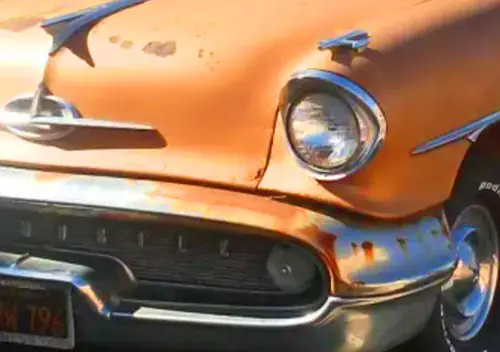
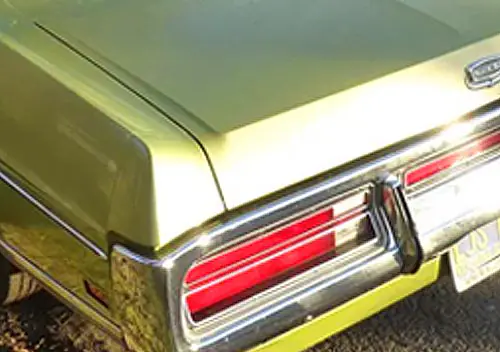



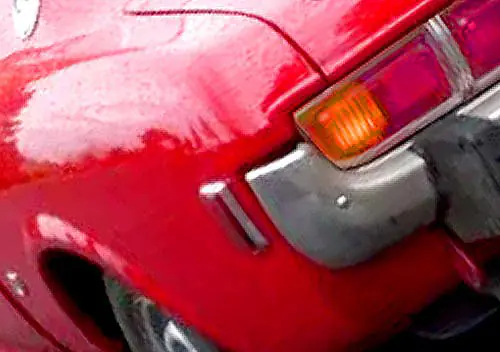

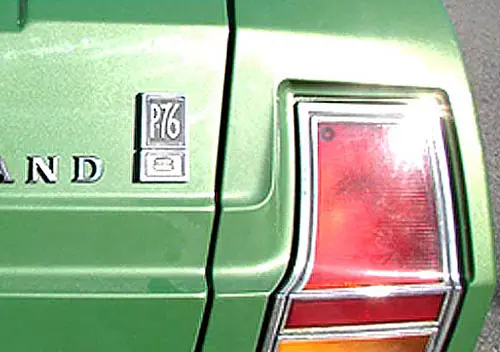
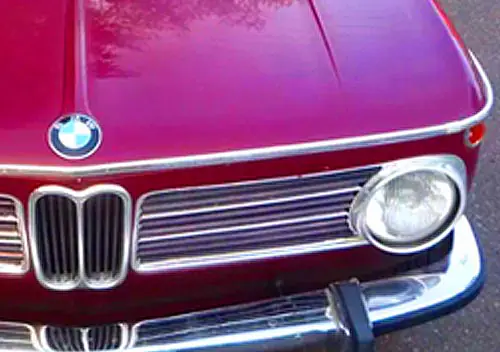


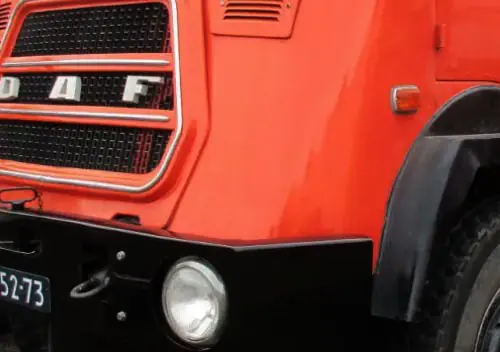
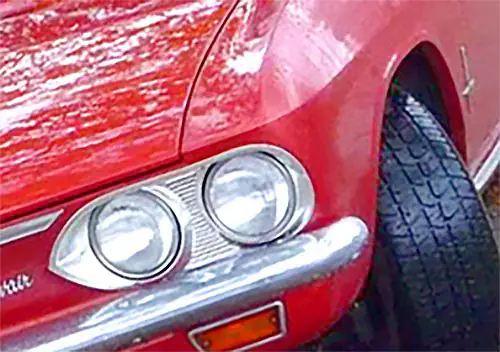
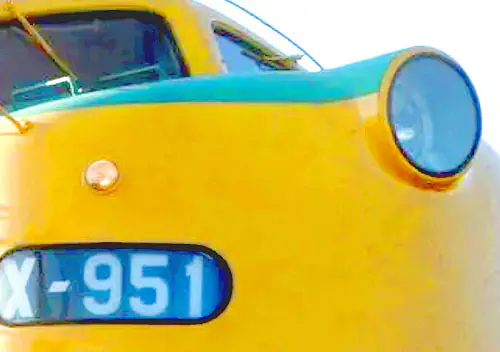
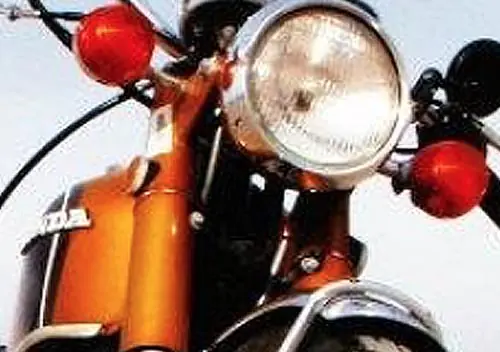
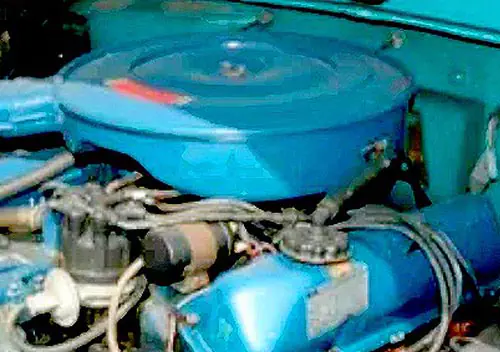
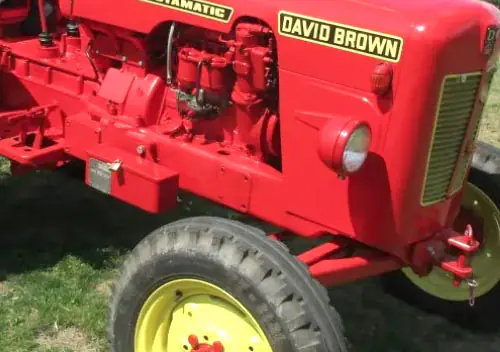


Great stuff. One question, “It also enabled Volkswagen to use a diagonally split dual brake system.” How does the strut angle enable this?
The negative scrub radius has a self-stabilizing effect on the steering if the front tires are subjected to uneven acceleration or deceleration forces.
Ok, that makes sense. I never thought about how a diagonal split system could have uneven braking
This is now the second article lauding the VW Golf that fails to mention the Fiat 128 at which it was targeted, and which pioneered most of the layout. The 128’s front suspension was classic McPherson strut with track arms and a swaybar, but the rear was a far more sophisticated IRS. Yes, the Golf was more influential in the US market, but it didn’t blaze any trails beyond that cheap twist beam rear axle. The 128 had a more sophisticated engine too, and even had a 2-door hatchback variant.
I agree that the 128 had a more sophisticated rear suspension, but when it came to the engines (both SOHC designs with belt-driven camshafts), I think it was a wash.
VW bought a bunch of 128s to study Fiat’s transverse engine layout among other things.
I owned a 1972 128SL, which was a fastback coupe, but it wasn’t a hatchback. They’re pretty rare now- they rusted out pretty quickly. A real shame- it was a fun car.
The 1.3 liter Fiat SOHC engine in the 128SL had more sophisticated -and complicated- construction than the VW and featured a factory two-into-four header that let that little engine breathe.
If only Fiat could have overcome their iffy reliability and corrosion issues…
There was also an Estate version of the 128 sedan – a 2 box, 2 door hatchback with a folding seat. It’s much closer to what VW copied.
The 128 was quite a simple SOHC design with a cam belt. The cam ran in a separate housing, but this only simplified the castings and assembly.
Fiat didn’t invent the MacPerson strut, Earle MacPherson did in the late ’40s, so neither manufacturer has any claim to it at all.
The torsion beam rear suspension WAS a big deal, and it was enormously influential.
I never claimed Fiat invented the MacPherson strut. Clearly automobile designs have always built on and borrowed heavily from what’s been done before. However some designs have lots of new new ideas, and in the 128 Fiat created the engine and transaxle layout, along with an electric cooling fan and the general size and layout that VW copied for the Golf – and which became the industry standard.
The twist beam axle was influential and probably more used now than ever, because it’s cheap, light, doesn’t intrude on passenger space, and it’s cheap. I’ve got three cars with this setup now, and they range from kinda ok to seemingly pretty decent if you haven’t driven a real IRS in a while.
Terrific article and pictures.
It’s very clever engineering. Apart from the front hubs, narry a cast bit to be seen. Everything’s made of folded-up tin, light, simple, and cheap. (And, it must be said, in the wrong circumstances – rough roads – a bit fragile). And yet, because it’s carefully thought-out simplicity, it works very well indeed. There is one flaw, however. Impact harshness on these could be severe, feeling as if the suspension had no bushings whatsoever, mainly at the front. The Frenchies just over the border had long solved that issue with the tuning of bushes.
Twist beam axles are a great innovation, and generally work very well, but an independent jobbie does ride noticeably better (less head toss).
One quirk of the VW negative scrub radius: for geometric reasons I don’t get, they’d get sort-of stuck on full lock. You had to heave them off the extreme point each time.
Fifty years ago, lots was happening that summer, I spent a week at Lafayette college in an engineering seminar, my parents picked me up at my Grandparents (from where I’d taken the bus to/from Easton, we never lived closer than about a 4 hour drive from both sets of Grandparents) to go on a camping trip that was based around a family reunion. During that camping trip I remember reading about the VW Golf that was coming out, it made a big impression on me…such that in 1981 I bought a ’78 Scirocco, which was the first of 3 watercooled VWs which were to be my only cars up to the present (have an ’00 Golf I bought new).
Despite being right for me, I’ve had difficulty recommending them to other people that aren’t like me…they aren’t just get in and drive everyday cars, even with regular maintenance (which they seem to respond to more than most cars) they have given me challenges…I can’t say they haven’t left me stranded, or had some unusual problem (the funny thing to me is that the problems have been all different…the problems I had with my A1 and A2 cars were not at all problems on my A4, but the A4 problems were new to me. I find them pretty durable, probably more than reliable, as I’ve been able to keep them going for many years (why I’ve only owned 3 cars in 44 years).
The funny thing I remember was a picture of the rear hatch area on the Golf…I couldn’t believe there was as much room as there was on such a short car, being previously familiar with 3 box cars or station wagons. I’ve always been a fan of space efficient cars, and as time has gone on it seems to be more of a deal. I’m also a fan of the styling, I like highly angular designs more than rounded ones I guess, but these were so different than the aircooled cars that it was hard to believe they came from the same make. Too bad VW blew it in so many ways….I still don’t get how the dealerships went from exemplary with the aircooled cars to places you wanted to avoid dealing with in the watercooled ones…and they weren’t inexpensive, but I guess part of that was due to exchange rates even on the later aircooled cars. Parts weren’t cheap, and it seemed these started the “special fluid” requirements from antifreeze to power steering fluid, where you shouldn’t even think of using “regular” fluids.
But it seemed worth the hassles…these cars drive really nice…they are economy cars, maybe not the most reliable, but when running well are a pleasure to drive….at least to me, I guess, I’ve not owned any other make in a long time.
That summer we also moved back to Vermont (my Dad had been transferred to start a new plant in Virginia, but it turned out to be unnecessary, after 6 years they converted it into working on federal projects, which wasn’t my Dad’s field)….where we could have used the FWD of these, but they were pretty expensive for a 2nd car, my Dad ended up buying a new Subaru DL which back then had FWD, rather than a Datsun F10 which he also considered. Well before that, he was an aircooled VW driver, first while in the US Army stationed in Germany in the early 50’s and later buying a used ’59 Beetle as his first “2nd car”. But by the mid 70’s he’d owned two rear engined RWD cars and was looking for something with good winter traction. but no longer rear engine/RWD.
We were bringing the new (old used-up) diesel “Rabbit” home in a blizzard and I thought “oh darn, the speedo’s broken”. No, the speedo’s fine, I’m spinning a tire at 20-30mph. It’s really slick. But there is no reaction by the car, no torque steer, sliding, spinning, just calm and straight ahead. FWD was mature. Soon we learned it was fun, too.
Aaron, I’m really enjoying these articles. Glad to have you here teaching me new things every week.
And as a former illustrator I appreciate the quality of the diagrams—I wonder who SW was and how many of these they produced over the years.
Today I learned that the Golf originally came with four-wheel drum brakes.
Disc front brakes were optional, but I imagine that in practice, most Rabbits (at least in the US) had them.
In all my shady used car days, I never once saw a Golf I with front drum brakes.
In the U.S., front discs were initially included as part of the $296 performance package, along with radial tires, carpeting, vinyl upholstery, and some other items. The German Golf 1100 originally had four-wheel drums, and other markets might go either way — the UK importer standardized unboosted front discs even on the 1100.
Aaron, is the “appalling reliability” comment based on your experience with your family’s Rabbit?
Inter alia, but yeah.
Appalling reliability maybe the reason I haven’t seen one of these, this century in the Bay Area, while still seeing Beetles. Rust isn’t a major issue here. I should say this first through second generation.
Great work, creating a content-rich definitive single-source article and images, at an already credible single source site, for such important-to-know automotive history. Handy on-going reference source, for thousands of people.
Always impressed, VW fully leap-frogged the competition with the Golf/Scirocco. So efficiently, leaving the Beetle behind, with their now class-leading technology and economy. A benchmark, for the rest of the decade.
I had the opportunity to drive a friend’s early ’75 Rabbit, and he allowed me the freedom to drive it quite hard on the winding back roads of Balto. County, and it was a revelation. Admittedly I did not have experience in similar modern small cars like the Fiat 128, so the point of comparison were Pinto, Vega, other domestics, and Corolla and Datsun 1200. It was in a league of its own compared to them.
My ’05 xB reminds me much of a gen1 Rabbit/Golf with a boxier body. It has the same size engine (1.5L) and the same basic suspension arrangement. I did remove the front anti roll bar along with somewhat softer struts from a Yaris as well as 1″ blocks to raise the suspension that amount. The goal was to increase articulation in off-pavement and off-road driving, as well as softening the overly harsh ride. That has been accomplished succesfully. It has also increased lean in curves, but I’m good with that; it reminds me of my 404.
There’s also a somewhat more pronounced tendency towards oversteer, especially when coming down windy gravel roads; the rear end comes around very readily requiring countersteering. I see what looks to be an embedded anti-roll bar inside its rear twist beam suspension, and am thinking of cutting it out, although that might be difficult because it appears to have been added in the fabrication of the twist beam.
I have a thing for efficiency, low cost solutions,light weight and optimized solutions, and I give VW props for how they accomplished that in the Golf.
I remember my mother being impressed by the driving qualities of a friend’s diesel Rabbit in the late 70s, although we had a Honda Accord at the time. Later on I had a couple of Sciroccos and a Jetta. I thought the Scirocco was a great first car in the late 80s because it was stylish looking and fun to drive but didn’t have enough power to get you into trouble. Well except for the time I booted it on wet road, hit a curb and messed up a front strut and control arm. I still liked the platform, although rust as a concern in the NE. Once the bugs were worked out around 78-79 they were good cars, although I dislike the Westmoreland cars, which is part of why my third was a Jetta rather than a GTI.
Great write up and nice photos. I’d gladly have a green one just like that in my driveway. I think a gas-engined Rabbit with a 4 speed from that era would probably be just fine in modern traffic.
The Golf I is my ultimate favourite car. The road manners were heads above anything else available at the time. One excellent feature Aaron does not mention is the chair height seats. They made the car much more comfortable to drive compared to the competition, which often had the front passengers sitting close to the floor. Said seats made for a comfortable driving position, especially when one has long legs like I do.
The non-assisted steering was superb and not too heavy, as the cars where light. The Golf I was the first car I drove with fuel injection. All the coughing and stumbling of carbureted motors was absent the Golf. The EA827 motor was typical VW, tuned for generous torque from the long stroke.
I own a Golf VII and it is amazing how similar the cars are. Putting a modern Golf next to a Golf I would show how the basic styling and mission of the cars has not changed. A Golf will always drive well, be comfortable and economical to drive. The Golf VII has the same chair height seat and is also a hoot to drive, just like the Golf I. The newer cars have plenty of power for most drivers, making the cars faster than the older cars.
I would love to drive a Golf I to see if my impressions of it have changed. We tend to wax about the past, and maybe my love for the Golf I is misplaced.
I did, though: “aided by comfortable, relatively upright seats with decent lateral support.”
They were very good, though, and they had that dial adjustment for rake, a feature American cars often stubbornly refused to offer. (Contemporary Japanese cars typically had rake adjustment, at least as sold here, but even newer ones tend to be shy on lumbar support, and it’s not as easy to find a comfortable seating position.)
That’s a very good point.
Aside from the fact that VWs have always had a sort of unique approach to seating that involved sitting quite upright and firm, I do recall the adjustable rake of the seats in my Rabbit. I definitely appreciated that.
And true about European cars always having more adjustable seats. I’ve found that true from my ancient Volvo to my current BMW. Rake in particular is important for comfort on longer drives.
The rake adjustment on my Golf VII is electric, so it is easy to get the exact level of rake that you want.
To this day, I regard the Mk1 Golf as the best styled small car. It’s an ageless design that’s sharp from any angle. It’s as good a two-box design as is ever going to get. It might just be nostalgia, but I even like the round headlights better than the rectangular ones.
If it were me, rather than come out with the New Beetle, VW would have done better to bring back a retro Mk1 Golf. And the terrific suspension engineering matches those ground-breaking looks.
With that said, to describe the poor reliability, unlike other disastrous early small car efforts (Chevy Vega), there wasn’t any one catastrophic, badly engineered part or system on the Golf. It seems they can more accurately be described by the old ‘death by a thousand cuts’.
IOW, something was always going to give out on a Golf; you just never knew when or what it was going to be.
“If it were me, rather than come out with the New Beetle, VW would have done better to bring back a retro Mk1 Golf. And the terrific suspension engineering matches those ground-breaking looks.”
The retro Golf exists. It is called the Golf VIII, which is an updated Golf I. I have a Golf VII and it ticks all the boxes you specify. It has good looks and superb suspension engineering, helped by a real IRS, not a torsion beam.
By 1977 the reliablity problems of the Golf were largely gone. There were some bugs, like water leaking down the radio antenna socket, causing shorts on the fuse block. Also, the door handles broke all the time. Pretty minor stuff in a car that was an absolute blast to drive.
I’ve said this before, but the reliability problems were NOT gone by 1977. They continued to be expensive-to-fix garage queens for the rest of the Mk1 run.
My family had a 1983 Rabbit, complete four-speed stripper, which was as comically unreliable a car as I hope I will ever encounter. It left us stranded more than a dozen times during its ownership. This doesn’t appear to have been an isolated incident, and it put me off these cars for good. I knew some people who had Mk1 and Mk2 Rabbits and Jettas, and their experience wasn’t any better — my last encounter with a Mk2 Jetta again left me stranded on the side of the road on the way to the airport with a nonrefundable return ticket, a predicament I only escaped through the intervention of some benevolent rednecks.
That is not my experience at all. I have driven and/or sold dozens of Golf I cars and by 1977 they were reliable. The US made cars you mention were lemons but the German cars were not. You are comparing apples to oranges.
How is comparing cars from the same manufacturer, the same model, and the same generation comparing apples to oranges?
There was a reason Volkswagen market share in the U.S. imploded. These were not reliable cars, and in their day, they were frustratingly expensive to fix, either at a dealer or an independent VW specialist. Today, I’m sure the parts situation is very different, since you can order parts online, but that was not true in the late ’70s and early ’80s.
if you had good luck with them, Mazel tov, but the number of times I have been personally stranded by Golf I and Golf II derivatives is alarmingly high. There are only so many times you can end up shivering in the winter cold waiting for a tow truck and come away with positive feelings about a car.
Well…1984 Rabbit Diesel here. Despite it being a US-built car, it was incredibly reliable and never left me stranded for the nearly 10 years that I had it. As they say, your mileage may vary. 🙂
One of the most famous automobile magazine covers of all time regards a German built Golf, a press car at that. The Germans can build a Golf that is just as frustrating to own as the Americans and the Mexicans and probably the South Africans and Brazilians as well. Who’d I leave out?
There’s a reason (well, several including bizarre product and marketing choices,, but burned prior owners is definitely a big one) that VW is barely hanging on in the US market.
Signed,
Four-time VW owner that drinketh repeatedly from the well, knowing that distress to the wallet area may follow.
You left out Australia, Jim. And we too assembled ’75-’76 Golfs that were bad enough to send the local company into full importation within about a year (meaning real restrictions on sales back in the day). The Deutsche ones were better, but still not exactly hairily robust like the Japanese proved to be.
That ’94 CAR front page is actually almost an exact copy. Wheels magazine in Oz (Oz being where all the CAR editors came from for 30 years) has handed out a COTY since ’63. It used to be a big deal. In 1979, Ford released the XD Falcon (the very angular Granada Mk2 imitating re-skin of the original ’66 chassis). Wheels refused to give it, or any car, a gong in ’79, and a lemon was the cover, with No COTY on it.
Famously, Ford ran an ad, in the next issue of the magazine, with no car but 31 lemons stamped with all the cars released in ’79 (incl tasty things like the SAAB 900 turbo) and the tagline “There are times when being a lemon is not a bitter experience at all”.
Found it.
If I’d been in the market for a new car in 1975, I might very well have bought a Rabbit. I would have assumed it would be reliable, because VW. If I had your experience, I’d be furious.
I had a ’71 Fiat 128 from 1973 to 1977, and it wasn’t terribly reliable, but I had my reasons for buying it and knew what I was getting into. My situation at the time was such that I wasn’t extremely dependent on the car.
The MkVII might be good, but it looks nothing like the Mk1. Nostalgia for that first, sharp, original Golf is a huge part of the appeal.
If only the build quality had been consumate with the appearance.
And the MKVIII, if a wagon like Canuckuclehead’s, is literally bigger in every dimension than an original Range Rover! (Well, not height). And, incredibly, only about 100kgs lighter. It doesn’t just not look the same, or as good, it’s a totally different breed.
Cross ply tyres and front drum brakes on a Golf – every day is a school day on CC….
The early Mk1 UK cars got standard front discs, though still with cross-plies. VW actually got suppliers to come up with a new and supposedly improved cross-ply design for the Golf.
I have never seen a Golf I with bias ply tires or front drum brakes. Seems Canadian cars were never sold that way.
The 1976 Canadian brochure lists base Rabbits as having drums and bias-plies, with front discs and radials on de luxe and Custom
https://www.thesamba.com/vw/archives/lit/1976_rabbit_canada_french.php
The brochure clearly states friens disques avant, friens au tambours arriere, for all 3 models, the bottom model has no power assistance
I stand corrected. French is apparently not my strong suit.
In its home country, the situation was as follows:
When the first VW Golf (Golf I), was launched in 1974, the base version (only 1.1 cc / 50 hp) was equipped with drum brakes on the front axle. However, these were not retained for long, as braking performance was considered marginal. From MY 1976 on, all Golfs – no matter what engine or trim level – got front discs.
Many vehicles were later converted to disc brakes. In the late 1970s, VW even offered a conversion kit that was installed free of charge as part of a service. Therefore, original Golf I models with drum brakes on the front axle are extremely rare today, even in their country of origin.
Being an air cooled VW Mechanic I studiously avoided / ignored the Rabbits when they came out, fast forward to 1996 when I was single again, I bought a totaled / rebuilt 1982 Rabbit rag top, what an eye opener it was in spite of shoddy rebuild work .
It was amazingly reliable too .
Of course, now I’m old and decrepit I went back to my love and have a survivor stock 1959 Beetle, it is is reliable but it’s also crude, noisy and slow .
A German made GTI MK I would be a fun thing to have as a hobby car methinks .
-Nate
Great write up and pictures and info! I also learned today about how the scrub radius and diagonal split braking system are related.
Here is one of my favorite articles and pictures using the Rabbit/Golf as the example. Page 92 if it doesn’t already go there. These magazines were in my high school shop class, and luckily they are available online, but it’s not as good as the paper spread in front of you. As an 80s kid, I was fascinated by the bulk of cars becoming FWD. I would crawl under them to see how it worked, or sometimes get a view of a wheel steered to full lock.
https://books.google.com/books?id=5OEDAAAAMBAJ&pg=PA92&source=gbs_toc_r&cad=2#v=onepage&q&f=false
Another car that contributed to the VW FWD format was the Audi 50 / VW Polo. Audi did the design and production work and VW copied and pasted its logo on the vehicle.
I’ve driven various Mk1 Rabbits (Golfs) with US market 1500 carburetor, 1600 FI, diesel and 1.8 GTI powertrains as well as at least one Fiat 128, and I owned a Mk1 Fiesta,and while the Fiat and Fiesta were fun, the VW;s were a next-level blend of fun and refinement. Refinement, in the context of a lightweight 1970’s economy car. One aspect you don’t mention, Aaron, was the (relative) lack of FWD effects like torque steer. Sure there wasn’t much torque, but the straight line stability and general road feel on uneven terrain or braking/acceleration was far superior to the Fiat or Mk1 Fiesta, or even a Saab 99. Or a few years later, the GM X Body especially with a V6. By its second generation, I’d say the Honda Civic was pretty good too. And despite the “appalling reliability” (thanks Aaron 😀) of my own Mk1 Scirocco, I’ve gone on the buy a couple more Golf platform cars, a Mk4 New Beetle and our current Mk7 Golf.
Thanks Aaron, great article ! Perhaps most of us can agree that by Mk2, Golf/Rabbit reliability reached “normal/average”. Bought a 1986 Golf GTI new. In family service for almost 10 years, it required only normal servicing. My current 2015 Golf Sportwagen has been totally reliable, perhaps helped by being base-level 5-speed manual, no panoramic glass roof, etc.
I did briefly drive a Mk1 Fiesta, remember its great handling. Rode in a Fiat 128, remember the fabulous visibility, revvy engine.
When I was born, my parents had a Rabbit diesel, which I have no memory of because they traded it in on a Mercedes 300D when I was two or three; it just got to be too small. The only complaint I heard about it, other than being too small for a growing family, was that 70 MPH was the most you could ever get out of it.
Anyway, I think in look and function, VW showed what a small car should be. It wasn’t fancy, but it wasn’t just cheap. In too many cases, production costs overrule everything, and the result is always horrid. It’s also noteworthy that the Porsche 924 used virtually the same front suspension, and it’s one of the best-handling cars of the era. It’s too bad VW missed on the reliability front, and the parts that started off more expensive just got that much worse as the DM rose in value relative to the dollar.
VW wasn’t revolutionary here – in many ways, they copied the best, but made the right choices along the way. The Japanese paid good attention, but got the reliability piece of the puzzle too, which is why Civics and Corollas vastly outsold the Rabbit/Golf by the mid-80s. But that doesn’t detract from the Golf/Rabbit – it set a high water mark, and still does that thing so few economy cars can – it fails to look cheap.